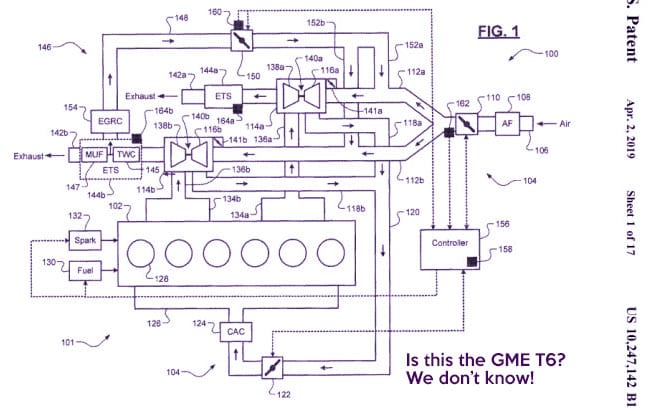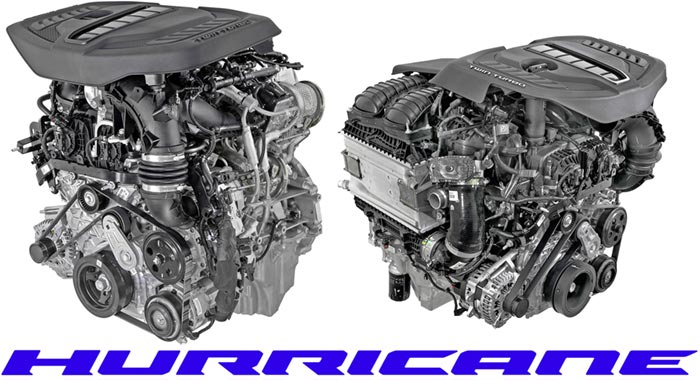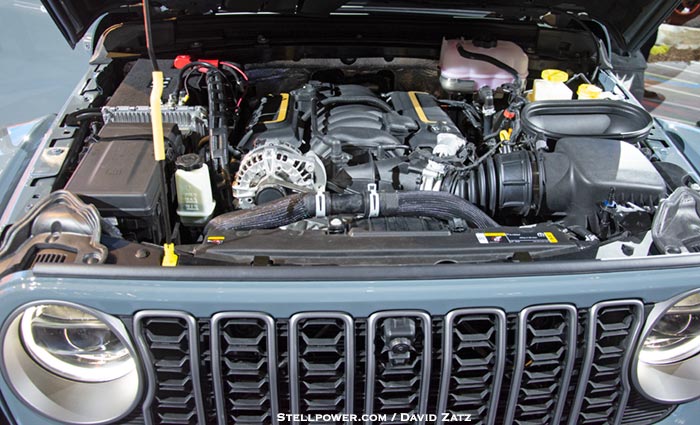Opinion. Back in 2019, I wrote about the “Tornado,” as the turbocharged inline six-cylinder engine then being development was coded. At that point, the GME 2.0 turbo, coded “Hurricane,” was still in planning. The code names were based on warplanes, as were the Eagle, Apache, and so forth—not past Jeep engines. The Willys/Jeep Tornado engine was an inline six-cylinder with an overhead cam, an advanced design which did not last long on the market. The Willys/Jeep Hurricane engine, in contrast, was a four-cylinder, replacing the “Go-Devil” engine, made from 1950 to 1971. (There was also a Jeep Hurricane concept car in 2005 which is unrelated.)

Allpar readers may recall this blueprint, which I was the first to find and use—and use it I did, becuase there were many rumors of the straight six. Quite recently, indeed, Stellpower was lambasted for “making up” a new engine which, it turns out, was quite real.
The Tornado turned out to be real, but it was given the Hurricane badge which had never been used by the four-cylinder—whose name turned out to be a prosaic and quite long “GME 2.0 liter four-cylinder turbocharged engine” until 2023, when it suddenly became the “Hurricane4.”
Meanwhile, the 5.7 was rumored to be getting a major upgrade even before 2019, to boost fuel economy ratings and to keep emissions in check as the rules got ever tighter. Fuel economy was, though you’d never know it in 2019-22, a serious concern as FCA US gave more and more money to Tesla in return for fuel-economy credits. Those millions would come back to haunt today’s Dodge, Chrysler, and Ram as they prepare to do battle with the all-electric company.
That brings us to today, when there is a 5.7 liter Hemi V8 nudging up against 400 horsepower, and a Hurricane (née Tornado) Six easily beating that number—and another edging out the “392” (6.4 V8) in power and torque. For the moment, the Hurricanes are only used in the Jeep Grand Cherokee and Wagoneer families; the Hemi is still in those families, and in Ram pickups and Dodger and Chrysler cars as well. The Hemi is likely cheaper to build, but the Hurricane is smaller, lighter, and able to get 10% better gas mileage—which adds up quickly when a company is trying to stop buying emissions credits.

The straight-six fits into tight spaces, be design; only slightly longer than the four-cylinder, it could be used in transverse mounts, though it’s not likely those are planned. The main targets were originally Ram pickups and Jeeps, with the option of no-expense-spared variants in Alfa Romeos and Maseratis (though the latter is unlikely now). Later, the company started planning at least the LB Challenger with this engine; likely the Charger and maybe 300 were also on the list for these new twin-turbo powerplants. The context for these plans was another plan—phasing out Hemi V8s by 2024.
The replacements for the Charger and Challenger are being developed knowing that these engines are available, alongside battery-electric versions of the same cars. The question remains, will the Hemi stick with us after all, or will Chrysler believe those fans who say it’s a V8 or nothing?
Even now, they’re not likely to create a whole new V8 just for these customers; and there are no rumors supporting that idea. The Hurricane Six may well be the last all-new gasoline engine coming out of Auburn Hills. What’s more, the Hurricane Six is made in Saltillo, Mexico, where every Hemi is made; so keeping the existing Hemis probably means fewer sixes.

For the Hemi to survive, company leaders would have to decide that:
- The power gains and 10% fuel-economy increase of the twin-turbo six are not equal to the marketing cache and lower cost of the Hemi V8
- FCA US has enough fuel-economy headroom from BEVs and PHEVs to avoid paying Tesla for gas-mileage credits
- The Hemi V8 can continue to beat emissions rules for a few years
- The Hemi V8 can fit into the next-generation cars without making them bigger, heavier, or pricier than a six-only strategy (this of course doesn’t affect Ram sales)
To deal with #2, the company could develop a more serious hybrid-Hemi setup than the one Ram currently uses. Still, that might only keep the Hemi in Ram pickups.
It’s also possible that the Hurricane Six will simply replace the Hemi V8 as the turbo-fours replaced the old 318 and 360 in cars—though never in pickups.
One other thought: if the Hemi does leave, the next to go would probably be the Pentastar V6. It’s possible that, by 2026, Chrysler will have made its last V-engine, and that Dodge and Chrysler will be back where they started—with inline four and six cylinder engines.